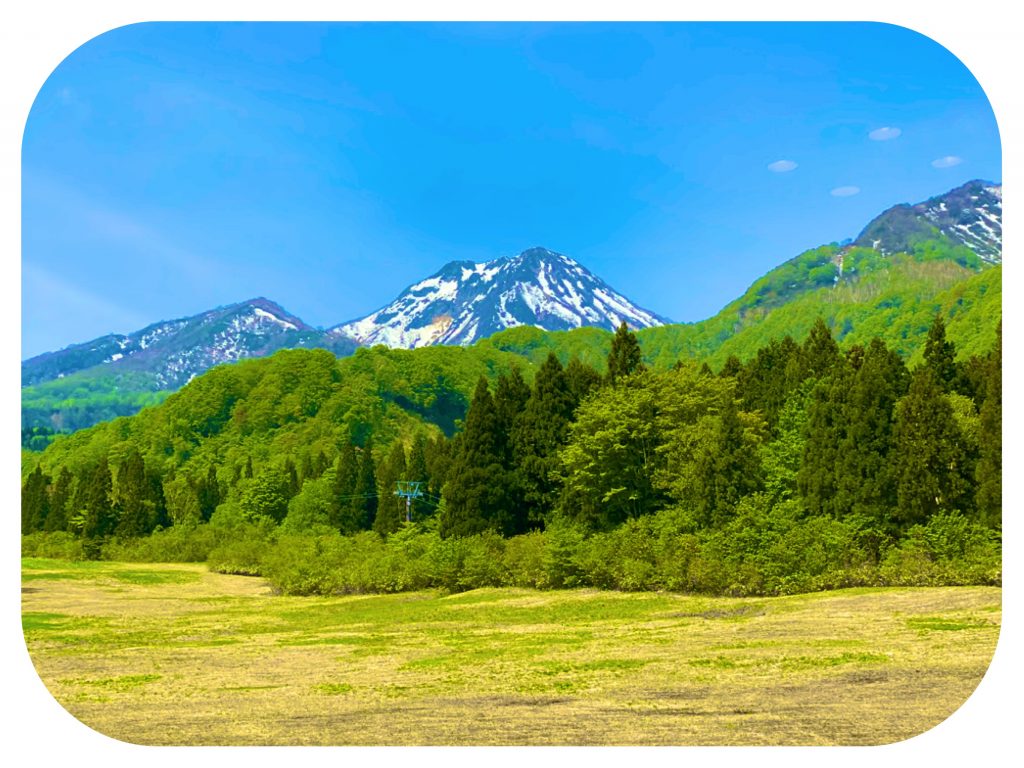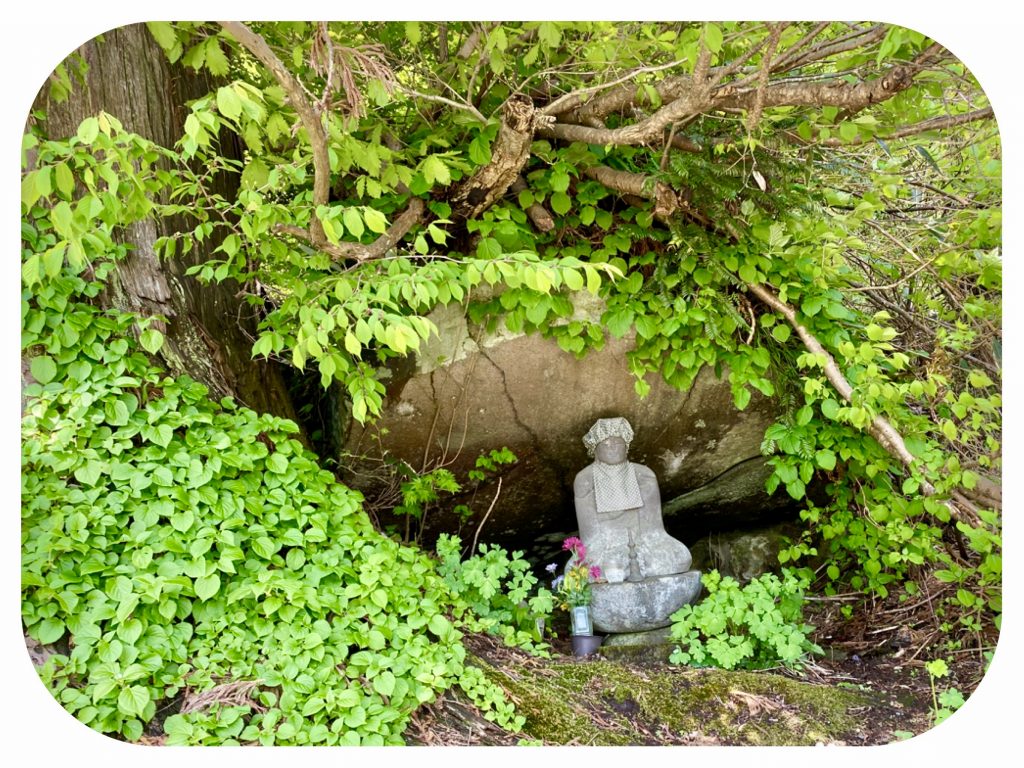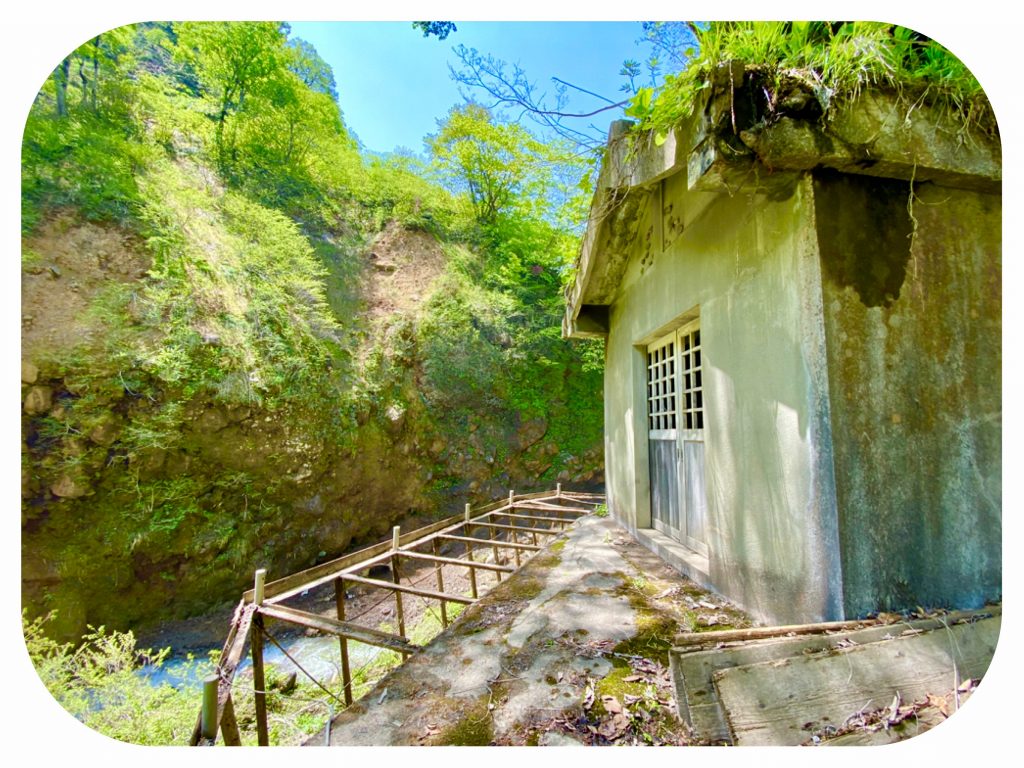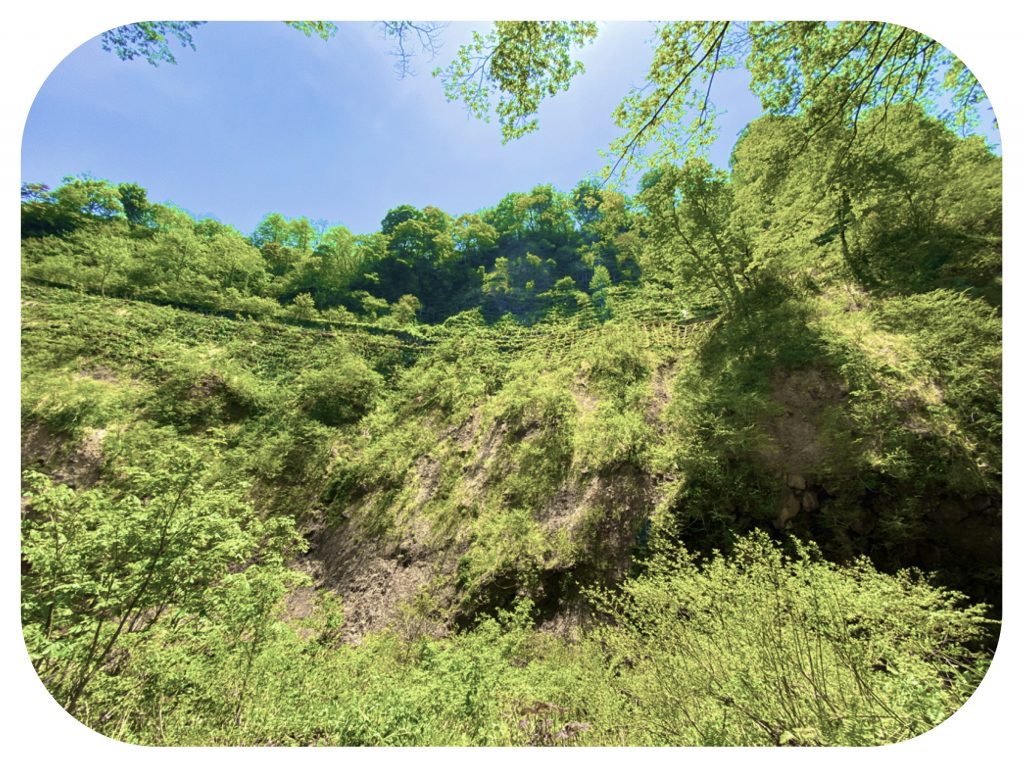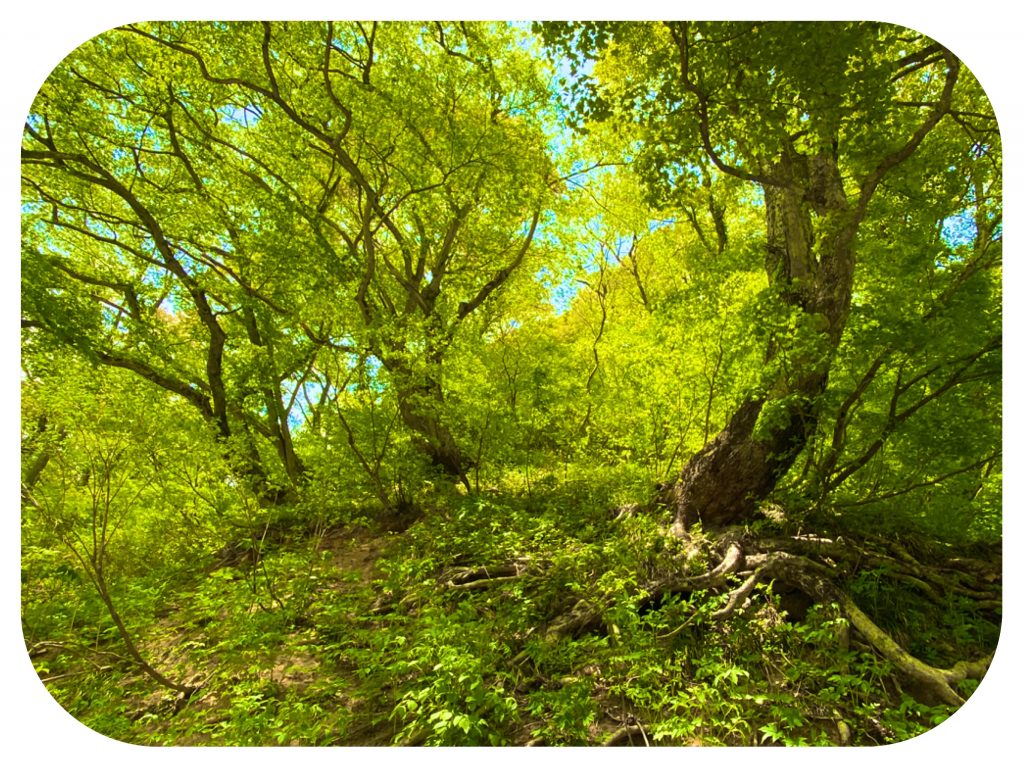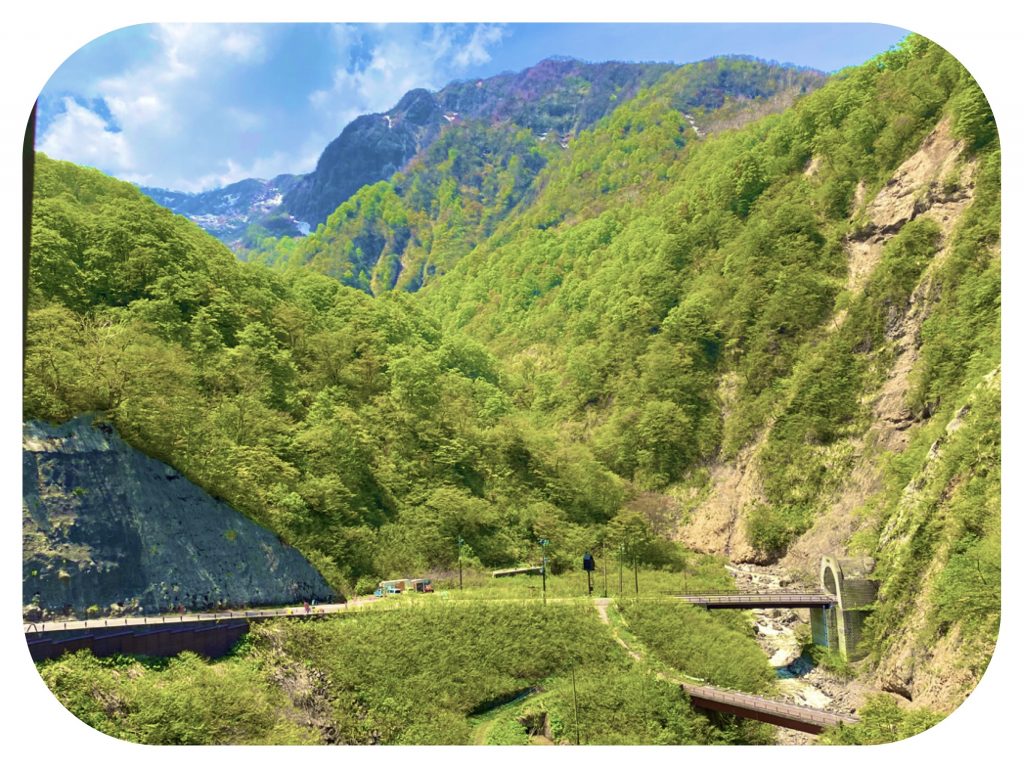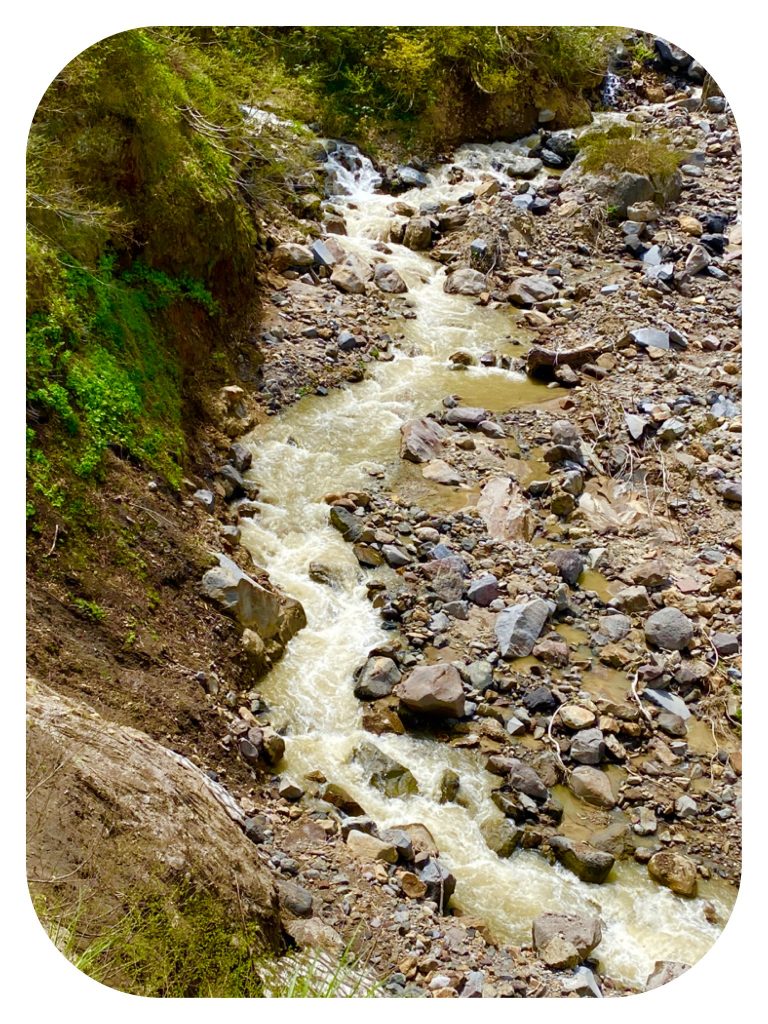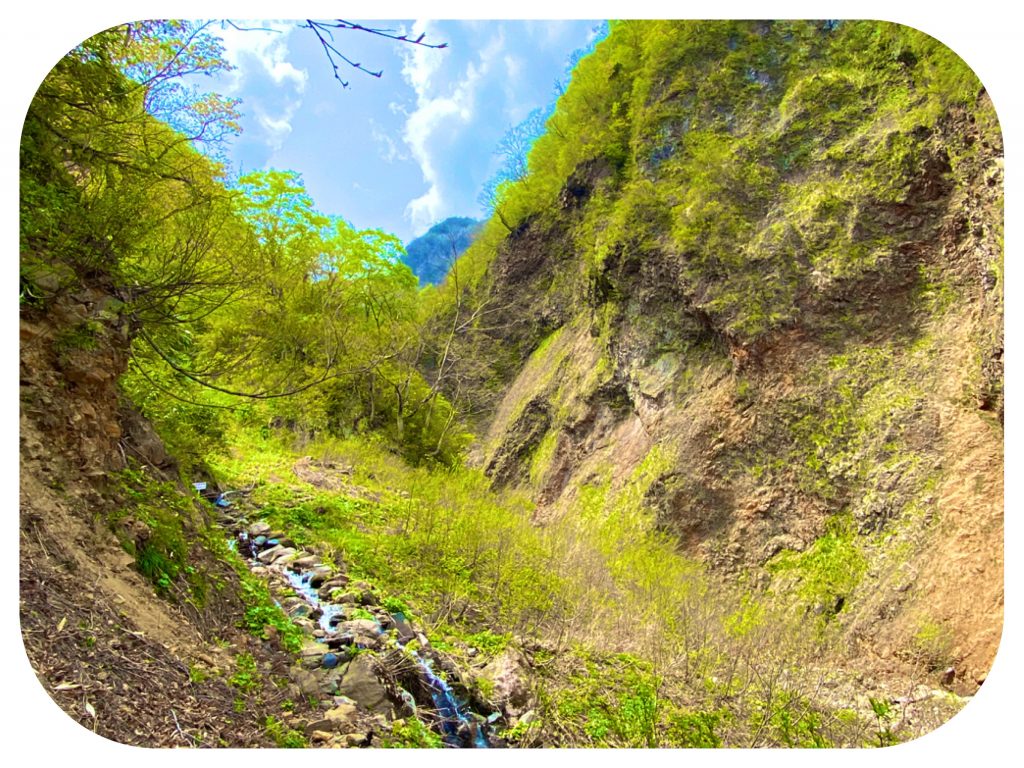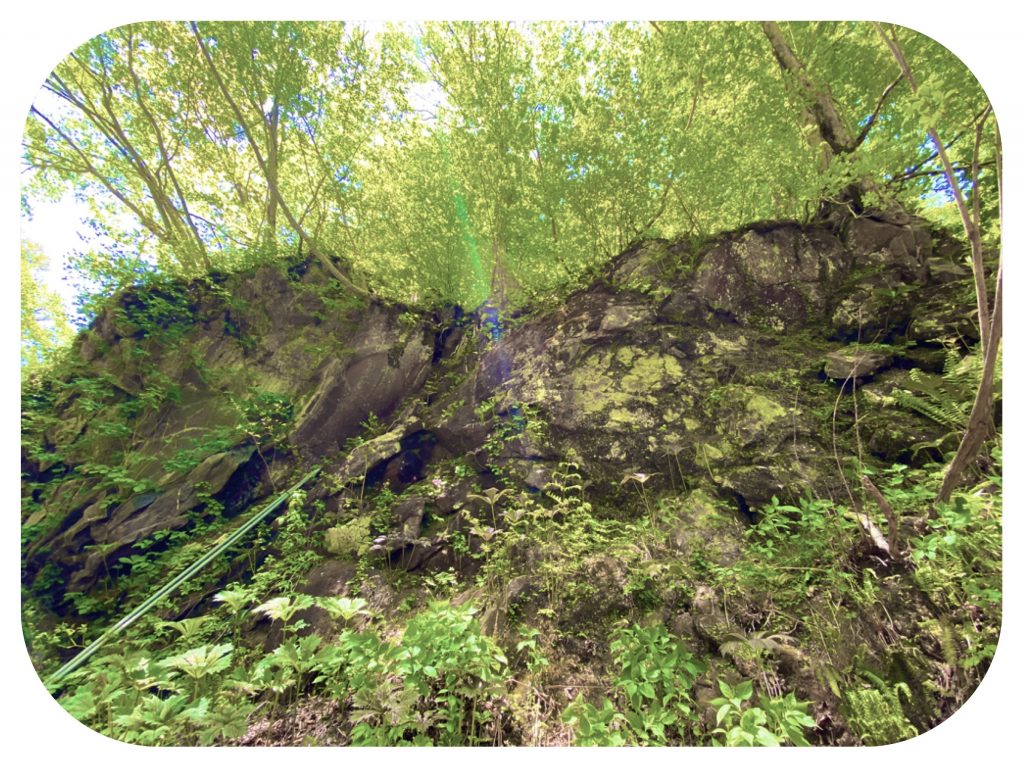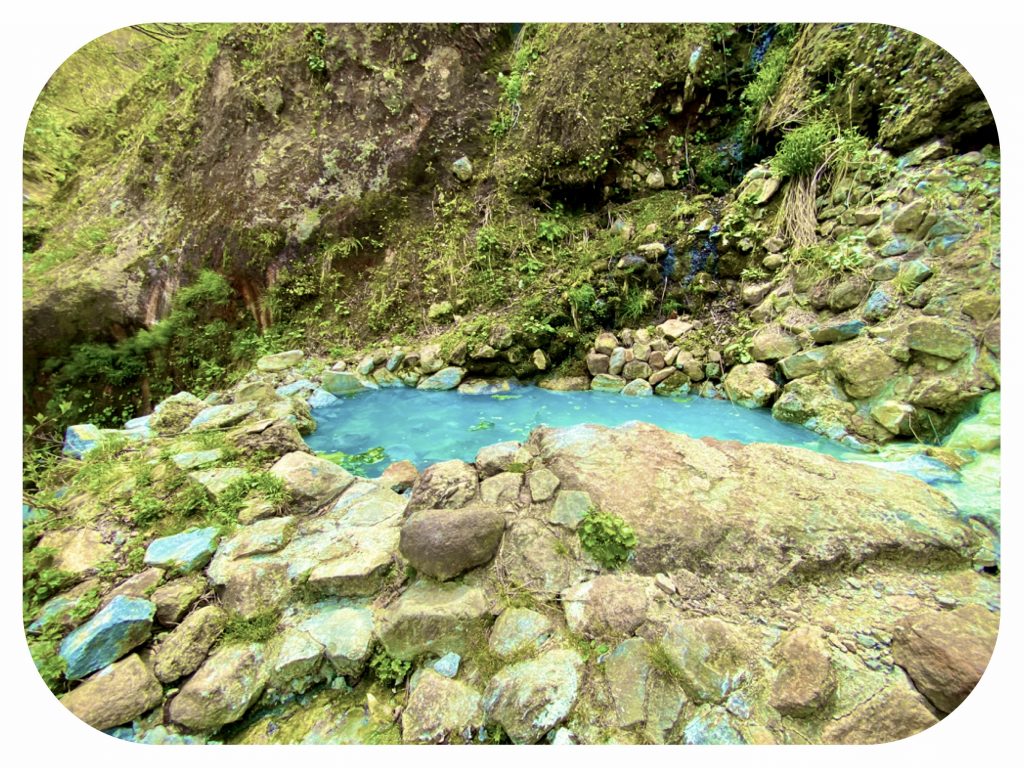Hiking Around Seki Onsen, Ofudo Waterfalls, Tsubame Onsen, Sou Waterfalls and Kyukamura Onsen, In Myoko Kogen National Park, The Japanese Alps
Hiking Around Seki Onsen, Ofudo Waterfalls, Tsubame Onsen, Sou Waterfalls and Kyukamura Onsen, In Myoko Kogen National Park, The Japanese Alps
The Japanese Alps are breathtakingly beautiful.
There are many small hot springs villages that dot this magnificent landscape, but none of them overshadows the mountains. These small villages are like little mushrooms on the slopes of the giant peaks.
We arrived in Myoko Kogen on a very rainy day.
A mist covered the area completely, and we could barely see where we had just arrived.
We were the only people who got off the local train, and the hotel’s shuttle van was waiting for us by the tiny train station.
We had booked a room with meals in the small hot springs ski resort of Kyukamura Onsen.
The hotel is located at the base of a small ski mountain, with just one gentle ski slope, but it overlooks several tall peaks, including Mount Myoko, Mount Kurosawadake and Mount Hiuchi.
On our arrival, we checked into a renovated mountain view room, but the thick mist obscured the mountains from view.
The hotel has a few guests, but not enough to keep the restaurant open.
Instead, they set up a private dining room for us, in one of the empty guest rooms across from our room.
They did the same for each of the three other rooms that are occupied in the hotel.
The meal included local mountain ingredients, including mountain herbs and local river fish.
It was a tasty multi course Kaiseki meal, which included all the traditional dishes like something pickled/sour, something fried, something boiled and something raw, something steamed and something stewed, a delicious steamed local rice, a miso soup and a dessert.
The next day we woke up to sunny skies.
Our room looks out over the ski slope, with tall mountain peaks in the distance, still covered in snow.
After a good breakfast, we asked the front desk to recommend a hiking course for us.
The whole area is a national park, with many hiking trails.
Many of the trails’ starting points are only accessible by car, but there was a wonderful walk right from the back door of the hotel.
We packed hot tea flasks and cookies, and walked up the ski slope, all the way to the top of the ski run.
We saw other walkers who were out collecting small bamboo shoots, mountain herbs and small mushrooms.
The green bamboo shoots they were collecting are smaller and thinner than those we have seen before during this trip, since the only bamboo that grows in this colder climate are thin bamboo bushes.
The next Onsen village up the road is called Seki Onsen.
At the entrance to the village, we saw a sign saying that we could walk to a waterfall if we veered to the left in the middle of the village.
This hiking trail did not show up on my maps, but we followed it anyway, trusting the village sign that we saw.
The road soon ended and we descended into a steep and unmaintained hiking trail.
It took us down to the forest floor, and we knew that we would have to climb all this way back up, to continue our walk towards Tsubame Onsen.
At one point, we had to use a rope anchored into the cliffs, in order to go down and later up, a slippery part of the trail.
Luckily the rope was well anchored and it was very useful.
Ofudo waterfalls, which unfolded before us, cascaded down with massive power into the fast moving Otagiri river.
There is a small shrine with a small observation deck from which you can see the falls above you, but the wooden deck has completely disintegrated.
Even the metal frame that remains, that used to hold the deck, was completely rotten and looked precariously dangerous.
We walked carefully on the remaining concrete slab around the small shrine, in order to view the massive waterfalls.
They looked amazing.
Inside the shrine, they have stored the metal railings and the remains of the wooden deck boards, that once were part of the viewing platform.
It looks like nobody has walked this trail to the waterfalls in a long time.
Most people stop on the car road, and take a quick glance from above.
We climbed back up using the safety rope, and walked up Sekiyama mountain.
Back in Seki Onsen village, we spotted a cafe that was open.
The owner could not make us cappuccinos, but said he could make a Café Au Lait.
We sat there resting, as he brewed fresh coffee.
It took a long time, and he apologized.
Finally his partner came in, holding a bottle of milk.
We understood that he had gone to buy milk for our coffee, in the nearest town.
Seki Onsen has no shops, only a few inns and an onsen that has red colored spring water.
The coffee was good and we felt touched that instead of refusing us, saying he has only coffee with creamer, he went out to get milk for us.
They were very friendly in the cafe, and asked where we were going.
They said that it is a hard walk up to Tsubame Onsen village, with a steep elevation gain.
They also said that in contrast to Seki Onsen that has red colored hot springs, Tsubame Onsen has white colored hot springs.
The red color of the Seki Onsen hot springs is from the rich Iron content that we could see oozing from the rocks, as we continued climbing up the road.
The white colored hot springs is from sulphuric water from the still active volcanic mountains in the Myoko range.
The climb up to Tsubame Onsen village was beautiful.
The road had a tunnel, but there was a bypass along the old abandoned section of the road.
It was a beautiful road overlooking the river below us.
We could see that the surrounding steep mountains had many landslides and washouts, but it was beautiful with lush vegetation and thick forests.
The last climb to Tsubame Onsen was along a very twisty road.
We climbed up and up on many switchbacks, past a road crew that was repairing some of the damage caused by landslides.
We saw some avalanche mitigation and landslide prevention up on the sheer cliffs.
At the entrance to Tsubame Onsen, we saw a handful of parked cars.
People were collecting bamboo shoots and walking around the small village.
Waterfalls cascaded down many of the cliffs around us.
At the end of the road, there was a hiking path to see the amazing Sou waterfalls, and access to a wild open air Rotenburo hot spring bath.
The road had a small barricade and was partially blocked, because of the recent mudslides, but a sign said that the open air onsen was open.
We walked around the barricades.
The views around us were absolutely breathtaking.
We felt like we were back in my beloved Himalayas, perhaps in India, Sikkim, Nepal or beautiful Bhutan.
There were tall mountains covered in snow, wide rivers with waterfalls everywhere, and hot springs flowing from the cliffs.
At the end of the walking path, there was a suspension bridge.
Beyond the bridge, one trail was blocked by a rock slide, while the trail to the left was open and seemed easy.
We followed it, and it led to a small outdoor hot spring pool.
It had white colored sulphuric water and it was next to a big waterfall.
The water was not very hot, and there was a wooden shack used for changing clothes.
Women and men soak naked together, but nobody was around anyway.
The water had not been cleaned in awhile, and there was a lot of algae in the water.
We sat on the rocks and had our hot tea, enjoying the amazing location we had just arrived at by the grace of the Divine.
We were in awe at the beautiful nature around us.
As we walked back to the village, we met two men who had come to bathe in the open air hot springs bath.
They also had crossed the warning barricades, and they had towels draped around their necks.
They asked us if the trail were accessible, and we told them that it was, and that they must turn left right after the suspension bridge and follow the river around the bend.
The walk back to our hotel was very scenic as well.
We simply retraced our steps, and walked back the same way we had come.
We made a mental note that there was a local bus, that we could use if we wanted to venture farther away in the next two days that we are staying in the area.
The bus was really just a small van, and when it stopped I went over and asked the driver about the schedule for tomorrow.
He told me that there is a bus stop closer to our hotel, which would be very convenient for us, especially since the weather forecast for the next two days called for rain.
On our walk back, we talked about how you can really only get a good feeling for the mountains by hiking in the area.
Otherwise, as a tourist at an onsen resort, you do not get to see all the hidden natural gems that are not visible from the car road.
It was really an awesome day of hiking in the Japanese Alps.
We soaked in the hotel’s hot springs, and from the baths, I could see the clouds descending over the far away mountain peaks.
From the vantage point of our hotel, it seemed impossible that one could hike up these sheer rock cliffs to the summit of the mountains.
But the access to the summit is not from where I was looking.
It is from the other side of the mountains, where there are beautiful and not too difficult access trails.
We were served another great dinner of fresh mountain ingredients in the Japanese style room across from our room.
These older Tatami mat rooms are smaller and much less comfortable than our renovated room with its great modern design, combining a Tatami mat seating area with western style beds.
Both Jules and I felt wonderful being in the mountains.
It is everything we hoped for and more.
There are no closed shops or restaurants, only small Onsen villages, majestic tall mountains and stunning quiet scenery that reminds us of the glory of all creation.
With awe and gratitude,
Tali and Jules
Daily Stats:
21,237 steps
16 km. Hiked
4 hours of active hiking time
Total hiking time of about 6 hours
